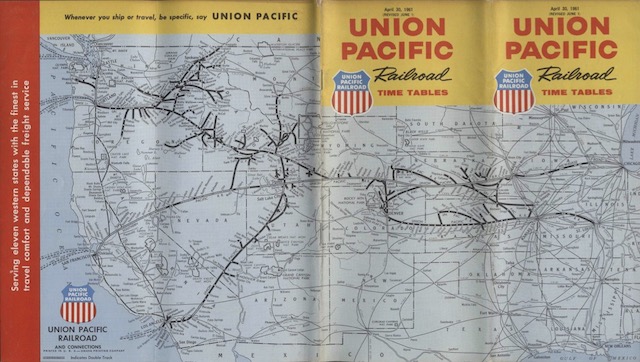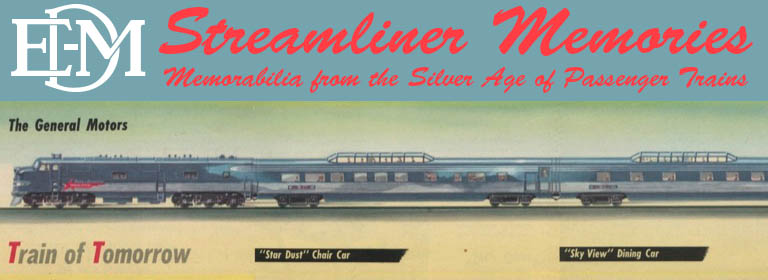In late 1960, Union Pacific changed the cover of its timetables from one that had a small map of its system to the fully detailed map of its lines as shown below. This map was used in place of the centerfold map that had been in earlier editions and helped the railroad reduce the size of its timetable from 52 to 44 pages.
 Click image to download a 20.0-MB PDF of this 44-page timetable.
Click image to download a 20.0-MB PDF of this 44-page timetable.
I’ve previously noted that all Union Pacific system timetables from 1951 through at least 1959 (and probably through mid-1960) followed the same outline so that the station index on pages 3 through 5 remained unchanged for this entire period. Surprisingly, the station index in this 1961 timetable is almost identical to the earlier ones, which was possible because the index refers to table numbers, not page numbers. A very careful reading reveals a few very minor changes, but for the most part all of the stations and tables remained intact, though obviously some of the tables are on different pages in this shorter timetable.
Through 1957, pages 6 and 7 of the timetables gave the schedules for the New York-Los Angeles and New York-San Francisco through sleeping cars. These were dropped in 1958, and to keep the timetable 52 pages long, two new pages were added at the back listing connections with trains to the East Coast and coach fares. Those pages are still in the 1961 timetable.
The big difference between this and earlier timetables, aside from the movement of the map from the centerfold to the cover, is that the Chicago-Los Angeles and Chicago-San Francisco timetables were cut to just one page each instead of two. The number of trains between these cities had been cut so much that only one page was needed to cover them. Chicago-Portland still used two pages.

Never really understood UP’s thinking in scheduling #103 & 104, at least at the west end. It arrived too late in L.A. to make connections with either the San Joaquin or Coast Daylight, and it departed too early to allow connections with eastbound 52 or 98.
The only connections at Los Angeles that they show are with the San Diegans. Passengers arriving on 103 had a 3-1/4 layover, while northbound ATSF 75 arrived at 2:45, just as 104 was departing, unless UP and ATSF had some kind of arrangement to hold 104 for connecting passengers, if any.